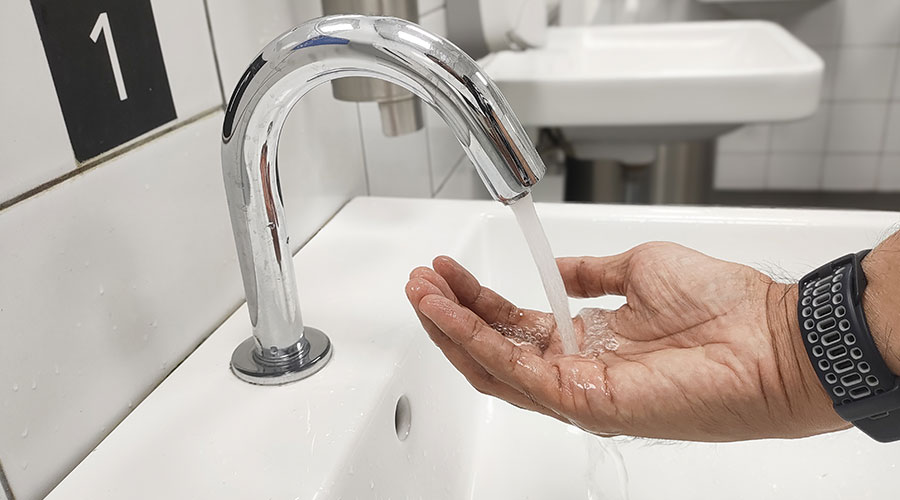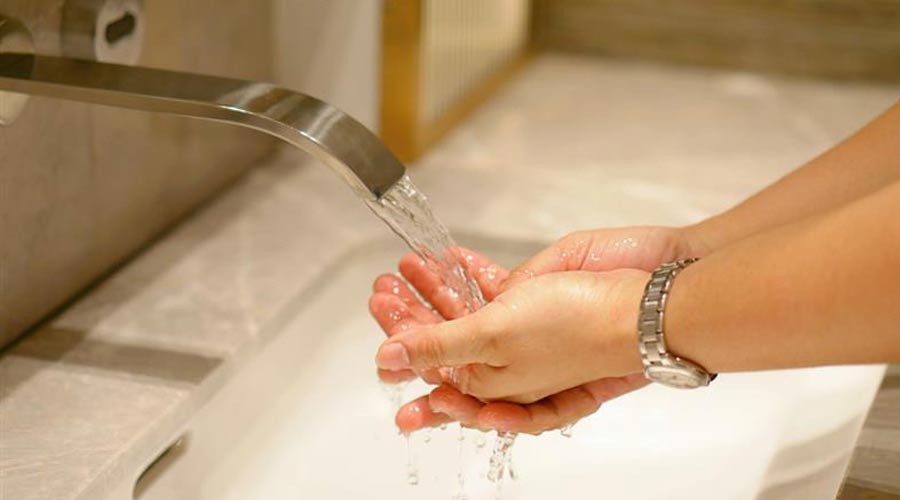Plumbing Technology: New-Generation Training
Touchless technology and other advances prompt managers to revisit worker training
The novelty of high-tech infrared sensors on plumbing fixtures in restrooms is starting to wear off. These fixtures are here to stay and for good reason.
The “greening” of America is in full swing now, and manufacturers have listened to the growing demand for more environmentally friendly and hygienic policies, procedures and systems. With the exception of entrance and stall doors, restroom users often do not have to touch any surfaces.
These products are a great improvement for the industry and, believe it or not, manufacturers anticipated the skeptical nature of the industry and considered reliability and maintenance in both original design and product life cycle. These developments have shaped the training requirements for new-generation restroom fixtures and dispensers.
Less Maintenance
The hidden surprise in these new technologies is that they often reduce maintenance costs. First and foremost, they control product dispensing. Paper products and soap dispensers require replenishment by housekeepers. Assuming proper settings and operation of dispensing equipment, managers can reduce the need for housekeepers to frequently monitor restrooms.
Even small improvements in the demand placed on housekeepers pays big dividends. If managers can achieve larger reductions in workload, they can create new opportunities to improve service levels or reduce costs. Contributing to these reductions is the fact that using touchless systems reduces the cleaning requirements for restroom surfaces.
Occupants also don’t feel the need to use towels as a barrier to lavatory surfaces. As a result, there is less discarded paper on counters and floors. All of these benefits add up to reduced maintenance.
Technician Training
Touchless plumbing fixtures also benefit trades workers. Touchless valves require less maintenance by plumbers because they operate with a sensor, not with the use of a shoe or in another potentially damaging way. The latest systems actually generate their own operating power with small turbines driven by the flushing water. This advance saves maintenance resources in the form of battery-replacement labor.
One obvious question is, if the products reduce routine housekeeping maintenance work, is it offset by another form of maintenance related to the new technologies? The answer is, yes and no.
Some waterless systems require new, and in some cases increased, maintenance. Waterless urinals, for example, operate on a new design and require invasive manual cleaning of internal surfaces. These systems also have a filter/sediment trap that workers must remove, and this is a new procedure. Also, a liquid within the unit provides the seal but also requires maintenance. If a user pours a foreign, hot fluid into the unit, maintenance requires a more complicated procedure, which in turn requires new training.
On the other hand, new technologies — particularly touchless fixtures — use design features that provide predictive and more targeted maintenance diagnostics, in addition to other benefits. These systems come with troubleshooting guides that define the various messages each fixture might send.
The systems can indicate low product levels, a low battery, and other potential problems. This new feature requires training on the diagnostic tool. While not complicated, it is necessary in order for an engineer to fully benefit from the technology advances.
Maintenance Strategies
A survey of manufacturers on technician training for new-generation restroom fixtures and products provided revealing results.
First of all, with the exception of initial installation, a primary goal is to keep maintenance in the hands of the same staff who worked with the introduction of these new technologies. So if housekeepers changed towel rolls before, the same people should be able to fill the new fixture.
If the system is hard-wired and does not use batteries, the voltage is stepped down to 24 volts. For most codes, this will allow for a plumber to continue maintenance of the fixture under a single-trade work order. This benefit is very important, particularly in union environments.
These systems, however, have proven to be simple enough to service that typical union work rules allow for the same trade to continue maintenance and take on the simple electrical systems. Battery-operated systems are simpler, and the later trade rules are even more applicable. Continuity also can be maintained with the housekeepers.
Some building engineers will opt to train the housekeepers to replace batteries in dispensing systems. Manufacturers anticipated this tactic and use off-the-shelf batteries that are accessible under or near the towel roll spindle, though some training is involved.
Finally, disposal of batteries might become a training issue in the near future as states — with California likely to be the first — enact rules for proper battery disposal.
Inventory Considerations
The actual components associated with new-generation fixtures tend to be very stable and compartmentalized. As such, sensors and motors are not so much maintainable as they are replaceable.
This strategy simplifies work for the maintenance staff. New parts will be added to inventory, but not more than two dozen parts for the new systems. Many manufacturers offer very long — and in at least one case, lifetime — warranties. These programs allow for the exchange of defective fixtures, further simplifying maintenance requirements.
Ultimately, some new components and diagnostic tools require additional training. Manufacturers continue to be the primary suppliers of training, and its quality and convenience is closely linked to each company, so this offering should be one criteria in selecting a product.
The typical format is “train the trainer.” For this approach to work, supervisors and shop foreman must become experts and properly catalog maintenance manuals.
A limited number of third-party suppliers offer training, but ultimately training is still largely done internally, complemented by web resources, operating and training manuals, and roaming technical support personnel.
Many managers are collaborating and even hiring part-time or full-time training coordinators. Considering the cost of labor, the strategy is relatively easy to justify continued training and development. This option also allows for a plant management department to provide a more integrated array of training with crossover characteristics.
The example of restroom fixtures is an easy case in which housekeepers can be cross-trained to understand and report on diagnostic indicators. Well-organized training systems and staff can ensure a smoother transition as turnover occurs among trades people and housekeepers.
These new technologies far exceed the performance of their predecessors. But if they do not operate properly, the department and the organization lose the full range of benefits.
Matt Adams is the president of Adams FM2, a facility management firm that specializes in public-sector facility operation and management consulting. Adams and his staff serve as technical advisors for states, universities, school systems, school districts, and government agencies nationwide.
Restrooms: Expectations and Technology
The new products and technology installed routinely in restrooms today are designed in direct response to the new expectations of building owners, managers and occupants.
The first expectation relates to hygiene. This design criteria has been around the longest and only increases with time.
In short, most people would prefer not to touch handles or surfaces in restrooms, and sensor-operated devices allow this to happen. In buildings such as hospitals, airports and restaurants where the need for hygiene is heightened, touchless systems both provide peace of mind and reduce the risk of cross contamination.
“Building engineers do speak to occupants and learn about their expectations, even in public places like airports,” says a manufacturer of towel-dispensing system. “These engineers are selecting the systems that more adequately meet the expectations of the building occupants.”
A newer but equally important goal involves meeting green expectations and directly affects maintenance and engineering departments. Many buildings and departments are striving for LEED certification and other self-imposed sustainability targets.
Most new restroom technologies advance this cause, as well. Controlled output of paper products, soaps and, most importantly, water are direct benefits. The Americans with Disability Act (ADA) predates these green standards, and in many cases, touchless fixtures satisfy ADA design requirements.
— Matt Adams
|
Related Topics:











